How to Toast Coconut
Completely transform your coconut flakes or shredded coconut into a deep, sultry, nutty addition to cakes, pies and other desserts. We'll show you how to do it in less than 10 minutes!
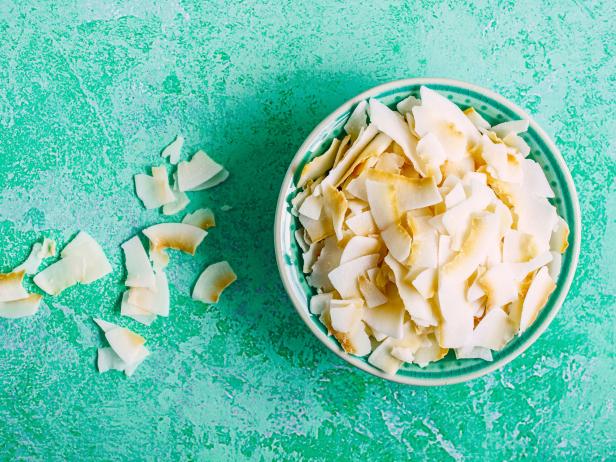
Aniko Hobel/Getty Images
By Carlos C. Olaechea for Food Network Kitchen
Carlos is a contributing writer at Food Network
The flavor of coconut embodies the warmth of the tropics – sweet, buttery and slightly nutty. Many of us know that toasting nuts can enhance their flavors. However, since coconut isn’t a true nut, toasting it doesn’t just enhance its alluring flavors but transforms them altogether. You get deeper caramel and malty notes when you toast coconut. However, too much toasting and you can end up with bitter, charred coconut. Because dried coconut is usually sold in such fine flakes, toasting over high heat could actually damage its flavor. As well, a second too long can cross the boundary from delicious to acrid. No worries, though. We have you covered with step-by-step instructions for how to successfully toast coconut.
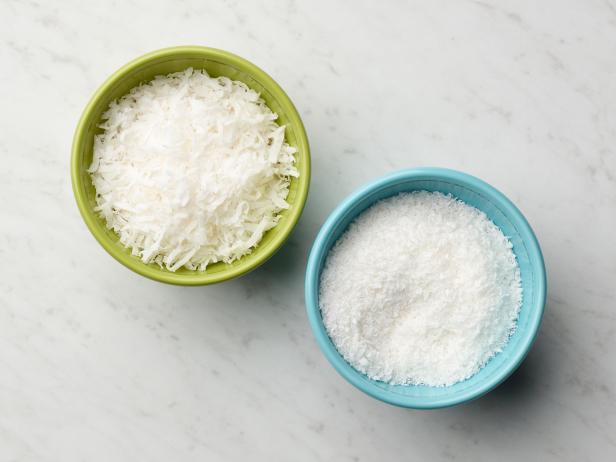
Renee Comet
Select Your Coconut for Toasting
If you want to toast coconut, you’re going to need to choose the right kind of coconut to toast. However, we don’t mean going out and picking a whole coconut off a tree or from a pile of fuzzy brown orbs at the market. Besides figuring out how to husk and grate fresh coconut, fresh coconut meat is actually very moist and needs to be dried before toasting. Similarly, frozen or refrigerated shredded coconut is too wet to properly toast.
To toast coconut, you’re going to want to use dried coconut flakes. You can opt for many different types of shapes and sizes from gracefully wide ribbons of shaved coconut to powdery finely grated coconut that is often labeled as desiccated coconut. Most shredded or flaked coconut available in North American retailers is sweetened, which can affect cooking times. The added sugars can caramelize much quicker than unsweetened coconut and can burn before it gets evenly toasted. We recommend using unsweetened coconut if you plan on toasting it.
Prepare Your Oven for Toasting Coconut
Before you toast your coconut, you will need to prepare your oven. First, make sure your oven is clean. Especially be on the lookout for food spills or any food residue on the oven floor. This can cause smoke to form in the oven while you’re toasting your coconut and give the end result a burnt flavor. Next, arrange the oven rack in the center position. Preheat the oven to 325 degrees Fahrenheit.
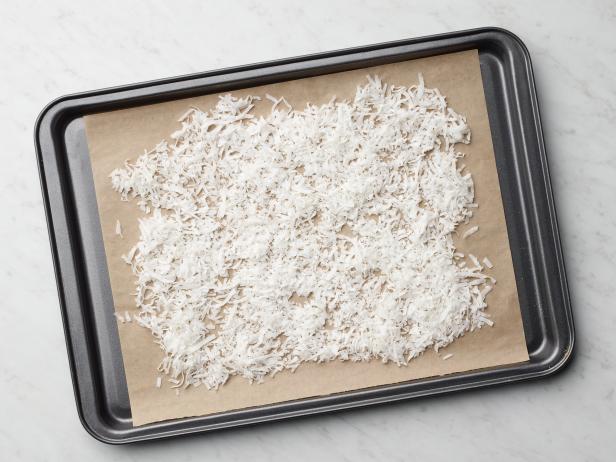
Renee Comet
Arrange Your Coconut on a Baking Sheet
While your oven is preheating, you’ll want to get your coconut ready to toast. Take out a baking sheet and line it with either a silicone baking mat or a sheet of parchment paper. These two items will act as a barrier between the coconut and the sheet pan, preventing any natural sugars in the coconut from sticking to your pan. Once you’ve lined your baking sheet, spread an even layer of coconut flakes or shreds on top.
Toast Your Coconut
When your oven is done preheating, you can now begin toasting your coconut. Slide your baking sheet onto the middle rack of your oven and close the oven door. Set a timer for three minutes. Make sure to switch the oven light on and check through the oven window to watch the progress of your coconut. Be on the lookout for rapid browning, smoke and black spots.
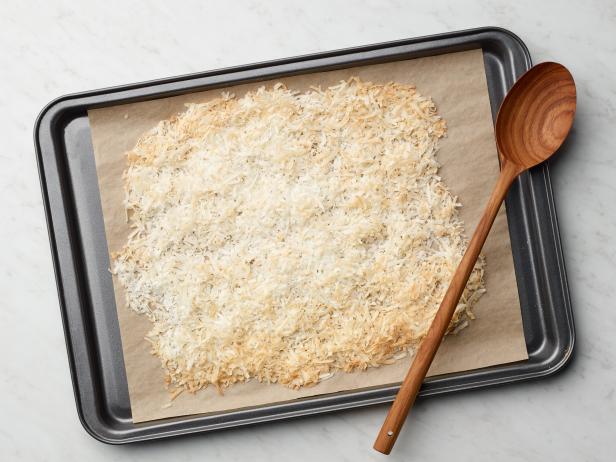
Renee Comet
Check Your Coconut and Stir
After three minutes have passed, open the oven door and remove the baking sheet with the coconut on it. Inspect it for color. If you see that parts of your coconut have browned a little too quickly, you may want to decrease your oven’s temperature by 10 to 25 degrees. Using a heat-proof spatula or spoon, give the coconut a stir to evenly distribute the coconut to areas of the pan that get hotter. For instance, if you notice that the coconut on the right of the pan has gotten toastier than that on the left side, shift the coconut flakes or shreds around so the less toasted bits go to the right side.

Renee Comet
Toast Your Coconut Again
If you had to adjust your oven’s temperature, wait for it to finish preheating. When ready, slide your baking sheet onto the middle rack of your oven again and close the door. Set a timer for three to four minutes and closely watch the coconut from the oven window. Make sure to stick around close to the oven. A lot can happen in a matter of seconds, and if you step away from the kitchen you may return to burnt coconut. After about three minutes, your coconut should take on the color of sand - a light golden beige color.
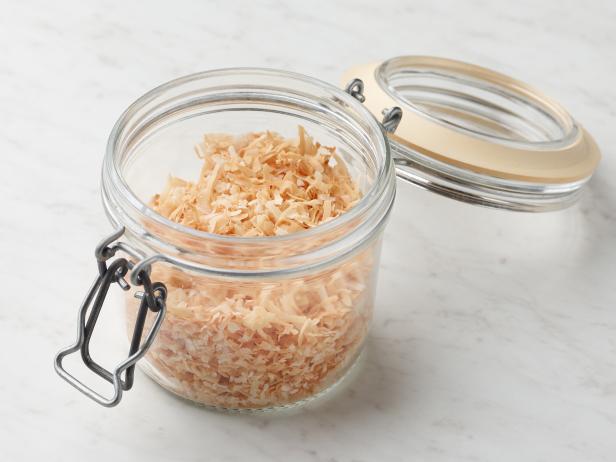
Renee Comet
Cool and Store Your Toasted Coconut
Immediately remove the sheet pan from the oven when it reaches the right color. Set your sheet pan in a cool part of the kitchen and allow the coconut to come down to room temperature. This should take 15 to 30 minutes. If you plan on using the toasted coconut right away, just wait until it is cool enough to touch. Otherwise, wait until it is completely cool before you store in a jar or other container. Any residual heat from the coconut can cause condensation to form in your storage container, making your coconut grow mold. You can store toasted coconut in an airtight container for about a week, and it doesn’t require refrigeration. After about a week, the nutty flavors will start to dissipate and taste a little bitter, so try to use your toasted coconut before then.
Related Links:


























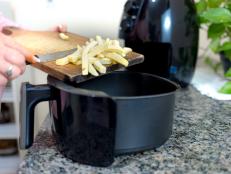
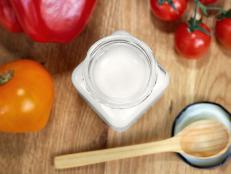

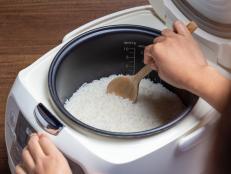


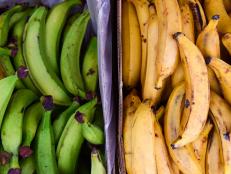
.jpg.rend.hgtvcom.231.174.suffix/1617401426015.jpeg)





























